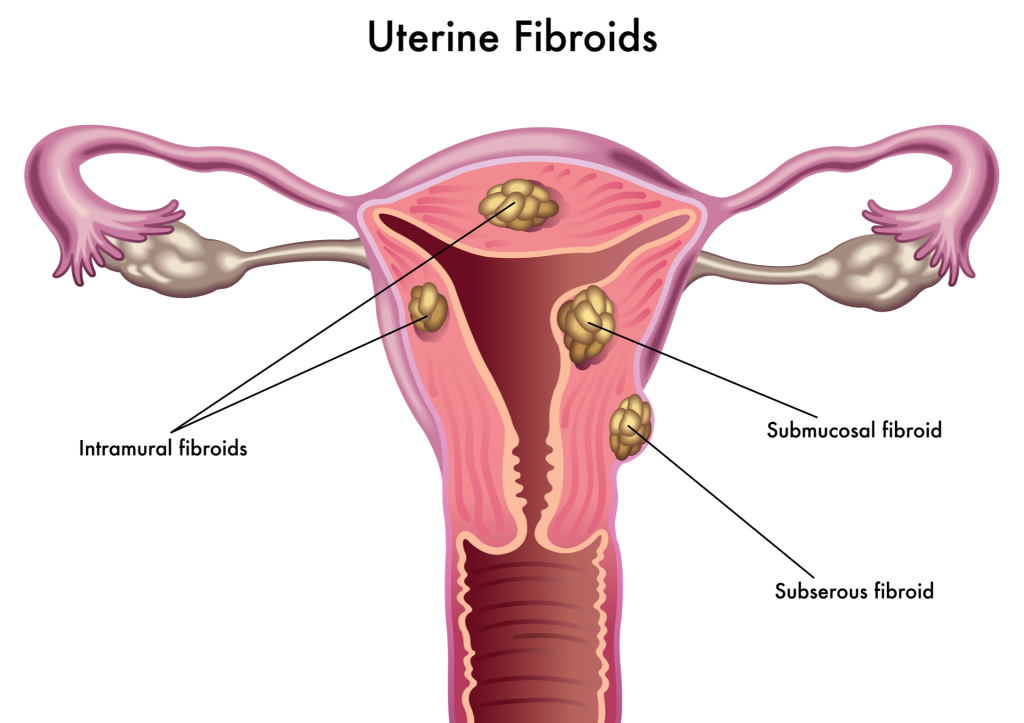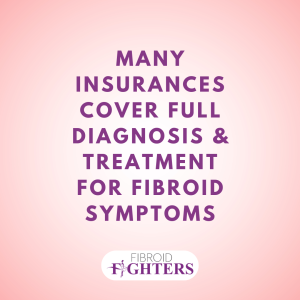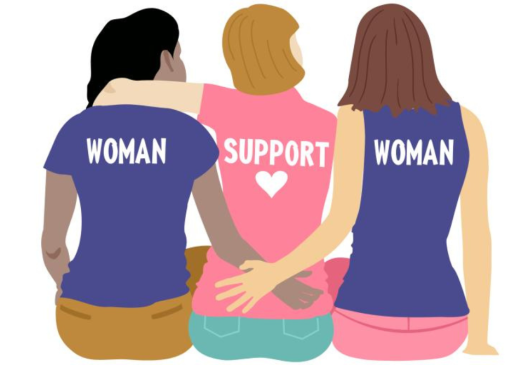
If you have been diagnosed with fibroids, you may wonder if treatment is covered by insurance. In this blog we will cover:
- What Are Fibroids?
- Types of Fibroids
- Fibroid Symptoms
- What is UFE
- Does Insurance Cover UFE?
- Questions to Ask Your Healthcare Provider

Uterine fibroids are noncancerous growths that develop in or on the uterus. These growths can vary from barely perceptible to as large as melons and grow individually or in clusters. Fibroid size, quantity, and location can determine symptoms and their intensity.
If you have been diagnosed with uterine fibroids, it is important to be aware of the different types and classifications. Fibroids are generally classified by location and can vary in size and number.
1. INTRAMURAL FIBROIDS
An intramural fibroid grows within the muscular walls of the uterus. If you have small intramural fibroids, you may experience only mild symptoms. As the fibroids grow larger, you may develop more severe symptoms that can eventually impact your quality of life.
2. SUBSEROSAL FIBROIDS
A subserosal fibroid grows outside the uterus, bulging into the pelvic or abdominal cavity. It can be attached to the uterus directly or via a thin stalk called a peduncle. As with other fibroid types, subserosal fibroids can vary in size and number.
3. SUBMUCOSAL FIBROIDS
A submucosal fibroid develops within the innermost lining of the uterus or endometrium. Submucosal fibroids can develop individually or in clusters and vary in size. This type of fibroid is most likely to cause heavy menstrual bleeding.
4. PEDUNCULATED FIBROIDS
A pedunculated fibroid is a type of fibroid that is attached to the uterine wall by a stalk, or peduncle. Based on location, there are two subtypes :
- Pedunculated subserosal fibroids: Develop outside the uterus
- Pedunculated submucosal fibroids: Develop inside the uterus
5. CALCIFIED FIBROIDS
A calcified uterine fibroid has outgrown its blood supply. When this occurs, you may experience a painful process called fibroid degeneration, during which a portion of the fibroid dies. Calcium deposits can then develop on top of the remaining fibroid tissue causing it to become hardened.
Fibroid Symptoms
The presence of uterine fibroids can lead to a wide range of symptoms, and these can vary in severity. The presence of uterine fibroids can lead to a wide range of symptoms, and these can vary in severity.
Many women experience different signs and symptoms. However, it’s important to know what to look for in case you do start experiencing symptoms, such as:
- Heavy and prolonged menstruation between or during your periods
- Anemia, which can lead to fatigue
- Pain during intercourse
- Frequent urination
- Constipation and/or bloating
- Pain in your pelvis or lower back
- Increased menstrual cramping
- Stomach swelling
Could your symptoms be fibroids?
Take our symptom quiz.
What is Uterine Fibroid Embolization (UFE)
Uterine fibroid embolization (UFE), is a non-surgical fibroid treatment that involves reducing the size of fibroids rather than surgically removing them. UFE works by using embolic agents to obstruct the blood supply to the uterine artery that feeds the fibroids, causing them to shrink and eventually die. UFE offers many benefits because it is an outpatient procedure with a shorter recovery time than surgery. The uterus is left intact, so fertility is not compromised. The average success rate of UFE, according to the National Library of Medicine (NIH), is 95%.

UFE is recognized by The American College of Obstetrics and Gynecology (ACOG) as a safe and effective treatment for symptomatic fibroids. It is performed by interventional radiologists, who can work with your primary healthcare provider.
If you need assistance finding centers who specialize in UFE, contact us by calling 855-455-5262 or email us at [email protected].
Does Insurance Cover Fibroid Treatment?
Discovering you have fibroids can lead to questions about whether insurance covers treatment, such as UFE. When grappling with the distressing symptoms of uterine fibroids, concerns about covering the cost of treatment can be upsetting.

Most insurance companies cover UFE, including Medicaid and Medicare. The percentage that is covered and out-of-pocket costs depends on your particular plan. Additionally, your plan may require referrals or a preauthorization.
Contact your insurance company to get details about co-payments and other out-of-pocket expenses. They can walk you through everything you need to know about your coverage.
Questions to Ask Your Health Provider
- Is a physician referral (primary care or gynecologist) required for a consultation?
- Is a specific provider considered an in-network provider?
- Is pre-certification required for the UFE pre-procedural imaging?
- Does the UFE procedure require pre-certification?
The Bottom Line: Most Insurance Providers Cover Fibroid Treatment
In conclusion, uterine fibroid embolization (UFE) is a minimally invasive procedure that is covered by most insurance providers. While coverage may vary depending on the specific plan, UFE is generally considered a medically necessary treatment for symptomatic fibroids.
If you are considering UFE, it is important to contact your insurance company to verify your coverage and determine your out-of-pocket costs.
For more information, contact us at 855-455-5262 or [email protected].







